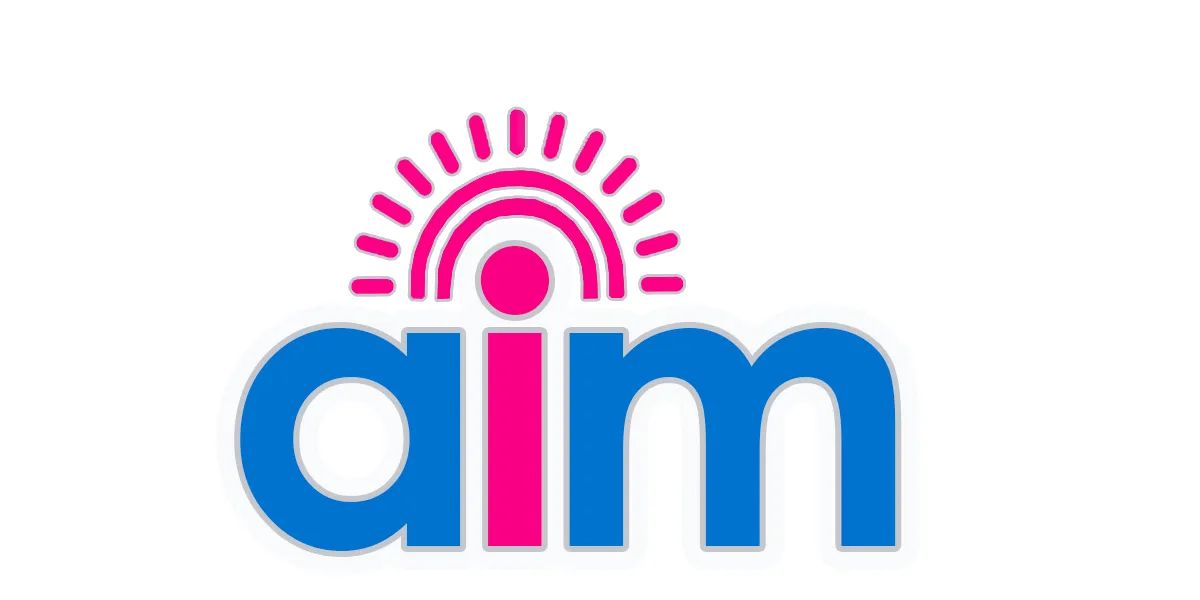Montessori och traditionell utbildning, hur skiljer de sig åt?
En av de frågor vi ofta får handlar om skillnaderna mellan Montessoriskolor och traditionell utbildning. Jag diskuterar denna fråga i inledningen till min nya, snart utgivna bok, Why Montessori Works - Ten Secrets.
Jag är glad att kunna dela med mig av detta utdrag ur den nya boken, och jag skulle gärna vilja ha din feedback!
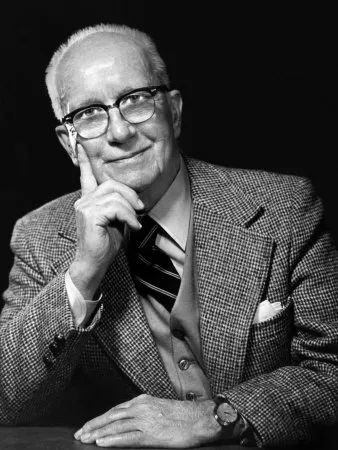
Våra barn är de mest briljanta eleverna och de mest kreativa och kärleksfulla människorna på planeten. Den välkände amerikanske filosofen, systemteoretikern, arkitekten bakom den geodesiska kupolen och uppfinnaren Buckminster Fuller kan ha sagt det bäst: "Alla föds som genier, men genom att leva blir de avgenierade."
Våra skolor och vissa aspekter av vår kultur gör barn genuslösa. Upp till 60 procent av vissa befolkningsgrupper i USA lär sig inte att läsa. Varje år hoppar över 1,2 miljoner elever av sina gymnasiestudier. Det är en elev var 26:e sekund - eller 7 000 om dagen. Vilket tragiskt slöseri med talang!
Maria Montessori, Italiens första kvinnliga läkare och trefaldigt nominerad till Nobels fredspris för sin anmärkningsvärda insikt om barns liv och potential, skrev för mer än sextio år sedan:
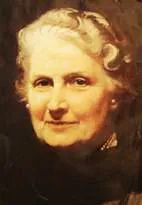
När barnets självständiga liv inte erkänns med sina egna egenskaper och sitt eget mål, när den vuxna människan tolkar dessa egenskaper och mål, som skiljer sig från hennes egna, som fel hos barnet som hon måste göra allt för att rätta till, uppstår en kamp mellan de starka och de svaga som är ödesdiger för mänskligheten.
Ty det är på barnets fullkomliga och lugna andliga liv som beror själens hälsa eller sjukdom, karaktärens styrka eller svaghet, intellektets klarhet eller dunkelhet. Och om under barndomens känsliga och dyrbara period en vanhelgande form av träldom har tillfogats barnen, kommer det inte längre att vara möjligt för människor att utföra stora gärningar. (Montessori, 1943, s. 20)
Varje barn är unikt
Montessori varnar oss tydligt för att om vi inte förstår barnens sanna natur och ger dem den hjälp de behöver, när de behöver den, kan de förlora sin briljans. Och vi ser det omkring oss varje dag. Jag har verkligen sett det; jag tror att vi alla ser det om vi är villiga att verkligen titta. Även om jag till stor del har arbetat i privata Montessoriskolor har jag också haft möjlighet att arbeta i stora kommunala skolor i Chicago, Phoenix och Savannah, både som lärare och som lärarutbildare, för familjer med låga inkomster. En del av de barn som jag har undervisat och observerat har mött enorma hinder. Vissa har en inre motståndskraft som gör att de kan ta sig förbi hindren, medan andra barns ögon och sinnen har verkat bli tråkiga. I många fall är de uttråkade.
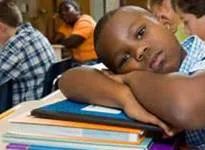
Jag har sett fyraåringar få höra av sin lärare att de var för dumma för att lära sig. Jag har sett en femåring bli slagen med ett kvastskaft och hur administratören häftigt förnekade vad jag hade sett med mina egna ögon. Jag har sett en sexåring rita sitt självporträtt i en blodpöl eftersom han förväntade sig att bli skjuten till döds, precis som hans far hade blivit. På ett sjukhus jag besökte i östra LA såg jag barn som misshandlats - ett litet barn med nitton ben brutna av sin far, ett annat med ärr över hela underkroppen där hans mor hade doppat honom i kokande vatten efter att han hade kissat på sig en gång för mycket.
Men jag har också sett dem som jag brukar kalla "de lysande", de små som är medvetna om möjligheterna inom sig själva och i sin omgivning.
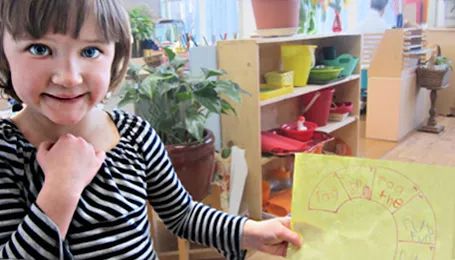
Dessa barn är de som är ivriga att lära sig och verkar älska själva livet. Det gör mig ledsen och arg att alla barn inte har möjlighet att lära sig i en trygg och stödjande miljö. Vi har ett samhälle för förebyggande av grymhet mot djur, men grymhet mot barn pågår i många familjer och skolor och vi gör inte mycket åt det. I många fall har unga föräldrar och lärare helt enkelt inte den information och mognad som krävs för att hantera behoven hos växande barn.
Jag känner lärare som arbetat natt och dag (och helger) för att kunna hjälpa de barn de arbetar med varje dag. Och jag har arbetat med andra som tyckte att det var meningslöst att ens försöka undervisa barnen på grund av deras socioekonomiska bakgrund, och hävdade att om de inte vet hur man sitter vid ett bord och äter, hur ska de då kunna lära sig sina bokstäver? Jag skulle sitta och argumentera med dem att enligt min egen erfarenhet är det möjligt att lära alla barn, oavsett vad. Men först måste man älska dem och möta dem precis där de är, inte där någon standardiserad läroplan säger att de ska vara. Först då kan du hjälpa barnet att gå vidare. Och jag såg hur ögonen öppnades på några av de lärare som insåg att deras barn kanske kunde lära sig trots allt.
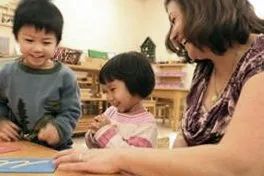
Jag skrev den här boken för alla föräldrar och vårdgivare som önskar det bästa för de barn de älskar. Jag skrev den för alla föräldrar och pedagoger som vill förstå vad Montessori egentligen är, vad dessa hemligheter kommer att avslöja om hur vi alla kan lära oss att bli mer effektiva, och varför ett sådant enormt intresse växer över hela världen. Och jag skrev detta för Montessoripedagoger, som strävar efter att uppdatera och fördjupa sin egen förståelse av vad vi gör varje dag.
Mer än en metod
Montessoripedagogik är mer än bara en metod för utbildning. Det är ett budskap om vilka vi är och hur vi kan behandla varandra på ett mer respektfullt sätt. Montessoris originella tänkande har påverkat världen på ett mycket bredare sätt än i de tiotusentals skolor som bär hennes namn. Möbler i barnstorlek och verktyg som kvastar och krattor finns nu överallt. Idén om praktiskt lärande finns i skolor överallt. Tanken att små barn kan och vill lära sig, utan att bli knuffade eller bestraffade, är mer allmänt accepterad.
Men vad är Montessoripedagogik egentligen? Montessori är ofta missförstått eller delvis förstått, och ibland karaktäriseras det å ena sidan som en plats där barn får göra vad de vill och å andra sidan som en plats som är för strukturerad för att kreativiteten ska kunna blomstra, med en serie lektioner som måste presenteras på ett mekaniskt korrekt sätt. Ingetdera är korrekt. Som vanligt måste vi söka sanningen i en medelväg.
I kapitlen i denna bok kommer vi att titta närmare på de hemliga ingredienser som gör Montessoriskolor så pålitligt framgångsrika över hela världen. I själva verket är inte varje Montessoriskola framgångsrik, eftersom allt som en skola eller lärare gör passerar genom hans eller hennes medvetande och utbildning. Men när det görs bra finns det inget bättre. Även när det inte görs så bra är det bättre än många alternativ.
Montessori-elevernas arbete är fantastiskt. Här är bara några före detta Montessori-elever som har gjort sin del i att förändra vår värld och som tacksamt erkänner Montessori som en nyckelfaktor i vad som lärde dem att tänka klart och kreativt.
Larry Page och Sergey Brin, grundare av Google, förändrar hur världen räknar.
Jeff Bezos, grundare av Amazon, förändrar hur världen köper böcker och i stort sett allt annat också.
Jimmy Wales, grundare av Wikipedia, förändrar hur vi får tillgång till och delar information.
Julia Child, TV-kock och författare, förändrar hur vi lagar mat och tittar på matlagningsprogram.
Berry Brazelton, barnläkare, barnpsykiater och författare, vars barnorienterade filosofi om föräldraskap har påverkat otaliga familjer att få barn som är "självsäkra, omtänksamma och hungriga på att lära sig".
Gabriel Garcia Marquez, colombianskfödd Nobelpristagare i litteratur, förändrade litteraturens ansikte.
Will Wright, grundare av SIMS-spelen, förändrar barns idéer om hur de kan skapa sin egen förberedda virtuella miljö.
Joshua Bell, Grammy Award-vinnande violinist, visar prov på kreativitet och skönhet.
Yo Yo Ma, internationellt erkänd cellist, FN:s fredsambassadör, vinnare av 15 Grammy Awards, Presidential Medal of Freedom & National Medal of the Arts, visar sin passion för alla former av musik och skönhet.
Helen Hunt, Oscarsbelönad skådespelerska och talesperson för Montessoripedagogik.
Anne Frank, memoarförfattare och författare, har för alltid visat oss en tonårings mod och mognad.
Erik Erickson, psykolog och författare, som fann Montessoris idéer så övertygande att han fick ett Montessori-lärarcertifikat trots att han aldrig undervisade.
HM Drottning Noor av Jordanien, FN-rådgivare, humanitär aktivist, memoarförfattare och hustru till den avlidne kung Hussein av Jordanien.
Peter Drucker, författare, managementkonsult, tilldelades presidentens frihetsmedalj för sitt arbete med mänskliga relationer på arbetsplatsen.
Prinsarna William och Harry förändrar hur världen ser på kungligheter. William kommer en dag att bli kung av England.
William och Kates förstfödde son George, gick i Montessoriskola vid 2 ½ års ålder, och vi får se vad han kan bidra med till världen.
Och detta är bara de kända... Jag skulle kunna lägga till dina barn och mina barn, och om jag hade plats och visste alla namn, skulle jag förmodligen göra det! Många tusen barn har gått igenom Montessori och briljerar inom sina respektive områden. Alla barn briljerar inte på alla sätt. Men om varje barn får med sig något mer än det hade när det klev in genom dörren, ja då! Om barnet har lärt sig att älska att lära sig, ja då! Vi gör vårt jobb.
Låt oss därför ta en titt på några av de allmänna kännetecknen för både traditionella skolor och Montessoriskolor, för att bättre belysa vad Montessoripedagogiken har att erbjuda, och notera att vissa kännetecken kan kallas "definierande kännetecken".
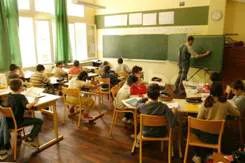
Traditionella skolor
- Traditionella offentliga skolor tenderar att ha en mycket centraliserad styrning av läroplaner och scheman.
- Finansieringen är knuten till testresultat.
- Lärarutbildningen är till stor del teoretisk.
- Traditionell undervisning bygger på direkt undervisning av hela klassen - läraren är den som förmedlar barnens lärande eftersom det är hon som undervisar.
- Det finns en fastställd läroplan för läsning, skrivning och aritmetik, noggrant uppdelad per månad, vecka och dag, som i allmänhet styrs av en lärobok som är anpassad till de prov som ska göras.
- Elever på en viss klassnivå har samma program, och ett barn antingen får det eller misslyckas.
- Alla barn i ett klassrum är i samma ålder.
- Läraren är ansvarig för sin undervisning.
- Miljön inkluderar lärarens skrivbord och en whiteboard, barnens skrivbord och stolar med material som läraren kan demonstrera med.
- Barnens intresse har ofta liten betydelse för hur läroplanen uppfylls.
- Lärare är de som avgör de flesta konflikter. Enligt en studie löste lärare 80% av konflikterna mellan barn i traditionella klassrum.
- Att upprätthålla disciplin är en uppgift för läraren.
- Arbetsperioderna är specifikt avgränsade för varje ämne och barnen måste sluta med vad de håller på med om det är dags för nästa ämne.
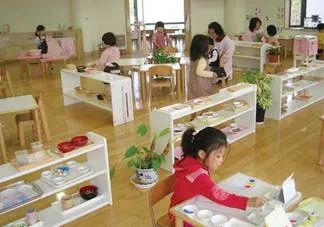
Montessori-skolor
- Majoriteten av Montessoriskolorna är fristående, medan ett växande antal är charterskolor eller ligger inom offentliga skolor. Varje charter sätter upp sina egna mål och standarder, och kan välja att följa Common Core eller inte. I de flesta fall på grundskolenivå gör barnen standardiserade tester.
- Finansieringen kan komma från flera källor, ofta främst studieavgifter.
- Lärarutbildningen bygger till stor del på praktiska lektionssekvenser inom de viktigaste läroplansområdena samt klassrumsarbete.
- Individer och små grupper undervisas utifrån observerbara behov genom att introducera dem till material som tjänar till att lära ut - barnet är agent för sin egen autodidaktiska utbildning.
- Det primära målet är att främja individualitet.
- Det är möjligt att accelerera barn i deras egen takt, eftersom det finns ett åldersspann på tre år och flera material som kan ta ett barn från den enklaste till den mer komplexa förståelsen, och inget barn uppmanas att prestera på en lägre eller högre nivå än vad det klarar av.
- Blandade åldrar, tre års åldersspann ger möjlighet för ledarskap och naturliga profiler av förmågor att sticka ut.
- Barnen är ansvariga för att lära sig och får lära sig enkla färdigheter i tidshantering.
- Förberedd miljö med gott om arbetsyta på bord och golvmattor med ett rikt utbud av praktiskt material som barnen får se hur man använder och får välja när de är redo att lära sig färdigheten som finns i materialet.
- Disciplin i en normaliserad klass är till stor del självdisciplin.
- Barnens individuella intressen ses som uttryck för individualitet och respekteras i dagliga val.
- Barnen lär sig konfliktlösning och tillämpar dessa färdigheter i cirka 80 % av konflikterna i Montessori-klassrummen.
- Varje morgon har barnen en två till tre timmar lång oavbruten arbetsperiod där de kan arbeta med det material de själva väljer, inom ramen för vad de har fått se och är redo att förstå.
Det fungerar!
När jag under många år har funderat djupt på frågan om vad utbildning är, vad den borde vara och vad den skulle kunna vara, kommer jag ständigt tillbaka till mina rötter i Montessori. Den är utan tvekan framgångsrik över hela världen. Det fantastiska är att oavsett barnens ålder fungerar Montessori som system. Jag har sett det fungera över hela USA, på barnhem i Sydafrika och Colombia, i skolor i Ryssland, Lettland, Tjeckien, Sverige, Italien, på landsbygden i Mexiko, i städerna i Mexiko, i Sydkorea, Australien och Kina. Det fungerar överallt där det finns barn.
Det började med Maria Montessori och hennes första skola 1907 med förskolebarn, sedan vidare till lågstadiet och sedan till spädbarn och småbarn. Under de senaste årtiondena har det utökats till ungdoms- och gymnasieprogram. Det finns till och med Montessori-program för Alzheimerpatienter och vård i livets slutskede. Det är ganska häpnadsväckande att ett system kan tillgodose behoven i alla skeden av livet. Vilka är hennes hemligheter? Hur kan ett system tillgodose behoven hos vem som helst i praktiskt taget vilken ålder som helst?
Låt oss ta reda på det!
